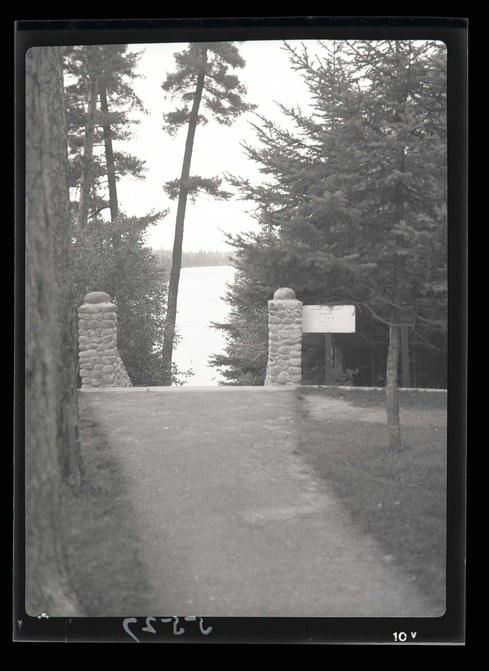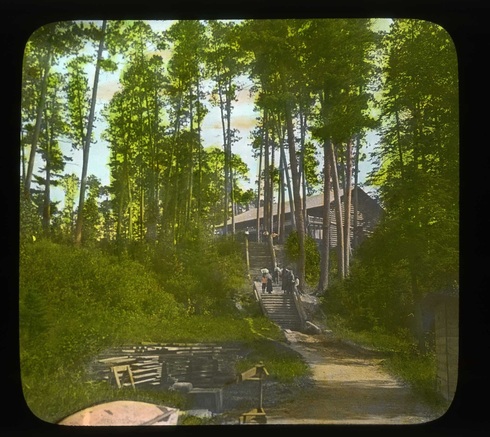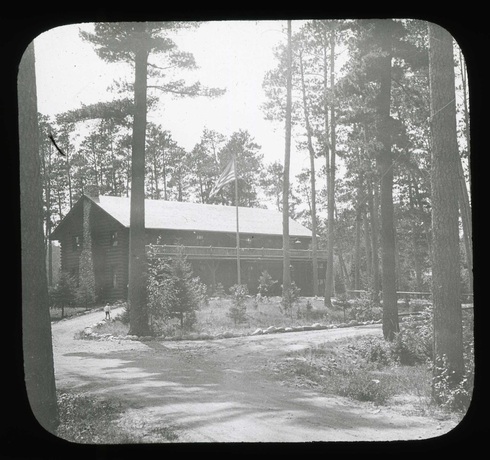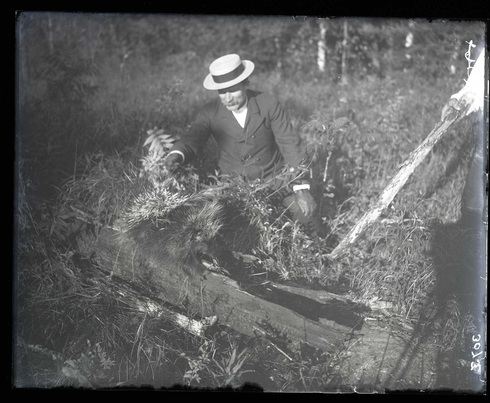On April 20, 1891, the Minnesota state legislature adopted an act to establish the first public park for the state of Minnesota on land that surrounded the headwaters of the Mississippi River at Lake Itasca. “An act to establish and create a public park, to be known as and designated as the Itasca State Park, and authorizing the condemnation of lands for park purposes,” established the boundaries of the park, certified the park’s name as Itasca State Park, vested authority of the park with the state auditor, and prohibited the destruction of trees and hunting of wildlife within park limits.
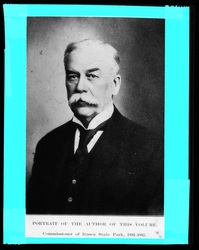 The act also established the role of a Park Commissioner that was to be appointed by the governor. On May 8, 1891, Jacob V. Brower was appointed Park Commissioner, a role in which he served until 1895. In 1904, Brower published Itasca State Park: An Illustrated History, which included a detailed narrative of the early explorations of the source of the Mississippi River, and also chronicled the establishment, growth, and early development of the park. It is in this book that we learn of another important act in Itasca’s timeline, “An act to appropriate money for the construction of a State House in Itasca State Park.” Approved on April 21, 1903, the act stipulated that the State House was “for the accommodation of the park commissioners and visitors.”
The act also established the role of a Park Commissioner that was to be appointed by the governor. On May 8, 1891, Jacob V. Brower was appointed Park Commissioner, a role in which he served until 1895. In 1904, Brower published Itasca State Park: An Illustrated History, which included a detailed narrative of the early explorations of the source of the Mississippi River, and also chronicled the establishment, growth, and early development of the park. It is in this book that we learn of another important act in Itasca’s timeline, “An act to appropriate money for the construction of a State House in Itasca State Park.” Approved on April 21, 1903, the act stipulated that the State House was “for the accommodation of the park commissioners and visitors.”
Itasca Park Lodge, which we know today as Douglas Lodge, was constructed between 1903-1905. Brower’s 1904 Illustrated History included an illustration of an architect’s draft for the lodge, which Brower reported would be located, “at a beautiful pine forest near the bank of Mary Creek, in Clearwater County.“
In the summer of 1917, Thomas Sadler Roberts, associate curator of the Zoological Museum at the University of Minnesota, and the University taxidermist, Jenness Richardson, visited Itasca State Park to collect a beaver specimen to be used in a habitat group display in the museum. Roberts captured these images of Douglas Lodge during his stay at the park:
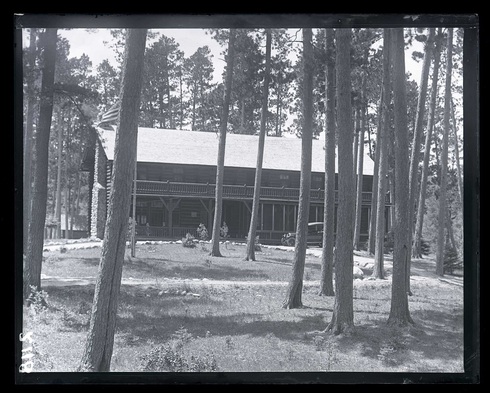
– Douglas Lodge, Itasca State Park, 1917.
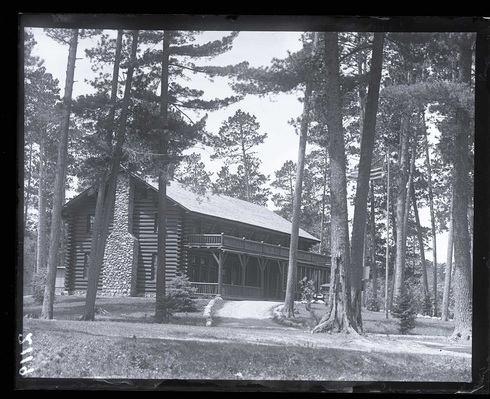
– Douglas Lodge, Itasca State Park, 1917.
On a visit to the park in 1921, Roberts captured the vantage point of Lake Itasca from Douglas Lodge:

– View northwest on East arm of Lake Itasca from a point near Douglas Lodge, 1921.
Walter J. Breckenridge, museum preparator and curator, also took pictures of the vantage point of the lake from Douglas Lodge during his visit to the park on September 24, 1937:

– Itasca Park, looking forward toward lake from Douglas Lodge, September 24, 1937
Ned L. Huff, professor of botany at the University, captured Douglas Lodge during his visits to Itasca too. Images from Huff’s lantern slides, circa 1940:
Douglas Lodge is named after Attorney General Wallace B. Douglas, who was an early supporter of Itasca State Park. For more on the architecture and construction of the lodge, see the description of Itasca State Park historic properties by the Minnesota Historical Society.
Visitors to Itasca State Park can stay at Douglas Lodge in one of their updated suites or rooms. Make a reservation on the Minnesota Department of Natural Resources website.
– Wallace B. Douglas with porcupine, Itasca State Park, 1902

